American Soil Was Made Fertile For Yoga Crop By Triad: Emerson, Thoreau And Whitman in 19th Century.
India’s Prime Minister Narendra Modi during his address to UN General Assembly in September 2014, had asked world leaders to adopt an international Yoga Day, saying “Yoga embodies unity of mind and body; thought and action; restraint 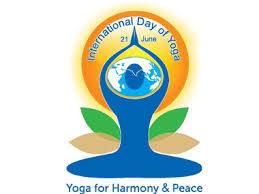 and fulfillment; harmony between man and nature; a holistic approach to health and wellbeing.” On December 11, 2014, the 193-member UN General Assembly adopted a resolution by consensus, proclaiming June 21 as ‘International Day of Yoga’. The resolution was introduced by India’s Ambassador to the UN and had 175 UN members, including five permanent members of the UN Security Council, as co-sponsors.
and fulfillment; harmony between man and nature; a holistic approach to health and wellbeing.” On December 11, 2014, the 193-member UN General Assembly adopted a resolution by consensus, proclaiming June 21 as ‘International Day of Yoga’. The resolution was introduced by India’s Ambassador to the UN and had 175 UN members, including five permanent members of the UN Security Council, as co-sponsors.
As we celebrate the second International Yoga Day, let us take this opportunity to trace the history of three stalwarts – Emerson, Thoreau and Whitman - who paved the way in 19th century for the present abiding interest, widespread enthusiasm, and uninhibited fascination toward yoga and meditation in USA. Let us start with a quotation from Native Americans who inhabited this country long before the British started the voyage to this land of opportunities.
Native American
“Listen to the wind... It talks.
Listen to the Silence... It Speaks.
Listen to your heart... It Knows.”
Yoga and Meditation in USA
The 2016 Yoga in America Study Conducted by Yoga Journal and Yoga Alliance is a national study, benchmarking a similar study conducted in 2008 and 2012 by Yoga Journal.
Survey highlights:
- The number of American yoga practitioners has increased to over 36 million in 2016, up from 20.4 million in 2012. 28% of all Americans have participated in a yoga class at some point in their lives
- 34% of Americans say they are somewhat or very likely to practice yoga in the next 12 months equal to more than 80 million Americans. Reasons cited include flexibility, stress relief and fitness.
- 75% of all Americans agree “yoga is good for you.”
Why the popularity is increasing year by year? It appears the more stress people experience, more they turn to methods that give them peace of mind. Yoga and meditation are considered the best methods to quiet a busy mind. As one practitioner sated, “But yoga is my medication. I feel good—soul, mind, and spirit in clarity.” Josephine P. Briggs, M.D., Director of NCCIH says, “This reaffirms how important it is for NIH to rigorously study complementary health approaches and make that information easily available to consumers.”
The roots of Yoga and Meditation can be traced to early 19th century starting around 1840s. Before Swami Vivekananda landed in the US and gave that rousing speech at the Parliament of Religions, the triad of scholars prepared the American soil to experience the benefits of yoga and meditation.
They have sown the Oriental seed in the Occidental soil preparing for others to reap the fruits of the yield. These transcendentalists have shifted the paradigm by preparing the ground for others.
Ralph Waldo Emerson: 1803-1882
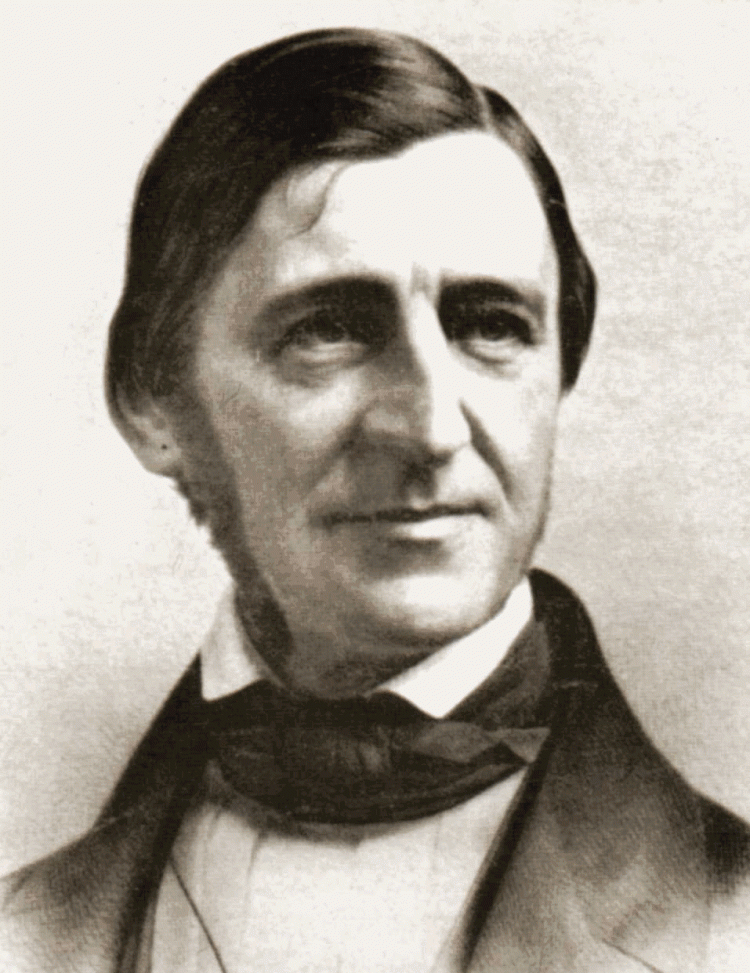 “We do not determine what we will think.” Ralph Waldo Emerson
“We do not determine what we will think.” Ralph Waldo Emerson
The groundwork for this paradigm shift had been established, however, by those Americans who were attracted to the wisdom that they found in those Hindu sacred texts that had been translated into English, some of which were available to American readers as early as the eighteenth century: texts such as the Bhagavad Gita, Laws of Manu, Bhagavad Purana, Vishnu Purana and some of the majorUpanishads. The Transcendentalist movement, consisting of such figures as Ralph Waldo Emerson, Henry David Thoreau, and Walt Whitman, was deeply indebted to these texts. The Transcendentalists were, in effect, the first American Vedantists.
Emerson is considered to be the most influential author of the 19th century; his name was known far and wide. In the 1830s, Emerson had copies of the Rig Veda, the Upanishads, the Laws of Manu, the Bhagavata Purana, and his favorite Indian text, 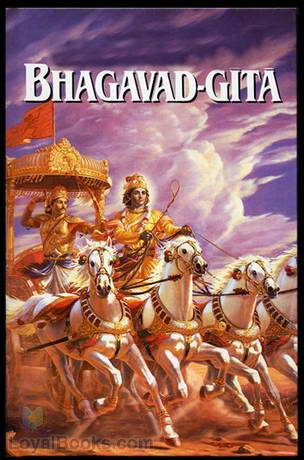 the Bhagavad Gita. “I owed a magnificent day to the Bhagavad-Gita. It was the first of books; it was as if an empire spoke to us, nothing small or unworthy, but large, serene, consistent, the voice of an old intelligence which in another age and climate had pondered and thus disposed of the same questions which exercise us.”
the Bhagavad Gita. “I owed a magnificent day to the Bhagavad-Gita. It was the first of books; it was as if an empire spoke to us, nothing small or unworthy, but large, serene, consistent, the voice of an old intelligence which in another age and climate had pondered and thus disposed of the same questions which exercise us.”
Repelled by the increasing materialism of the West, Emerson turned to India for solace:
"The Indian teaching, through its clouds of legends, has yet a simple and grand religion, like a queenly countenance seen through a rich veil. It teaches to speak truth, love others, and to dispose trifles. The East is grand - and makes Europe appear the land of trifles. ...all is soul and the soul is Vishnu ...cheerful and noble is the genius of this cosmogony. Hari is always gentle and serene - he translates to heaven the hunter who has accidentally shot him in his human form, he pursues his sport with boors and milkmaids at the cow pens; all his games are benevolent and he enters into flesh to relieve the burdens of the world."
Emerson, talking of the Upanishads and the Vedas, said that having read them, he could not put them away. "They haunt me. In them I have found eternal compensation, unfathomable power, unbroken peace."
His essay on “Over-Soul” published in 1841 was considered the greatest article appears to have been influenced by Vedanta and yogic experience. This term denotes the transcendence of duality, or plurality. It emphasizes the unity and oneness. It clearly described the inner experiences of mysticism. Yoga and meditation ideas are amply imbedded in this article on Over-Soul.
“… that Unity, that Over-Soul, within which every man’s particular being is contained and made one with all other… We live in succession, in division, in parts, in particles. Meantime within man is the soul of the whole; the wise silence; the universal beauty, to which every part and particle is equally related; the eternal One. And this deep power in which we exist, and whose beatitude is all accessible to us, is not only self-sufficing and perfect in every hour, but the act of seeing and the thing seen, the seer and the spectacle, the subject and the object, are one. We see the world piece by piece, as the sun, the moon, the animal, the tree; but the whole, of which these are the shining parts, is the soul. . . .
From within or from behind, a light shines through us upon things, and makes us aware that we are nothing, but the light is all. A man is the facade of a temple wherein all wisdom and all good abide. . . . When it breathes through his intellect, it is genius; when it breathes through his will, it is virtue; when it flows through his affection, it is love. . . .”
The concept Over-Soul is equated with Paramatma – Parama to mean super and atma to mean soul. Supreme Soul is nothing but Over-Soul. At that level Emerson observed “brief moments” that contain “more reality” than “all other experiences.”
He finds solace in the spiritual dimension of India over the materialistic West. "The Indian teaching, through its clouds of legends, has yet a simple and grand religion, like a queenly countenance seen through a rich veil. It teaches to speak truth, love others, and to dispose trifles. The East is grand - and makes Europe appear the land of trifles. ...all is soul and the soul is Vishnu ...cheerful and noble is the genius of this cosmogony. Hari is always gentle and serene - he translates to heaven the hunter who has accidentally shot him in his human form, he pursues his sport with boors and milkmaids at the cow pens; all his games are benevolent and he enters into flesh to relieve the burdens of the world."
Thoreau was America’s first practicing yogi.
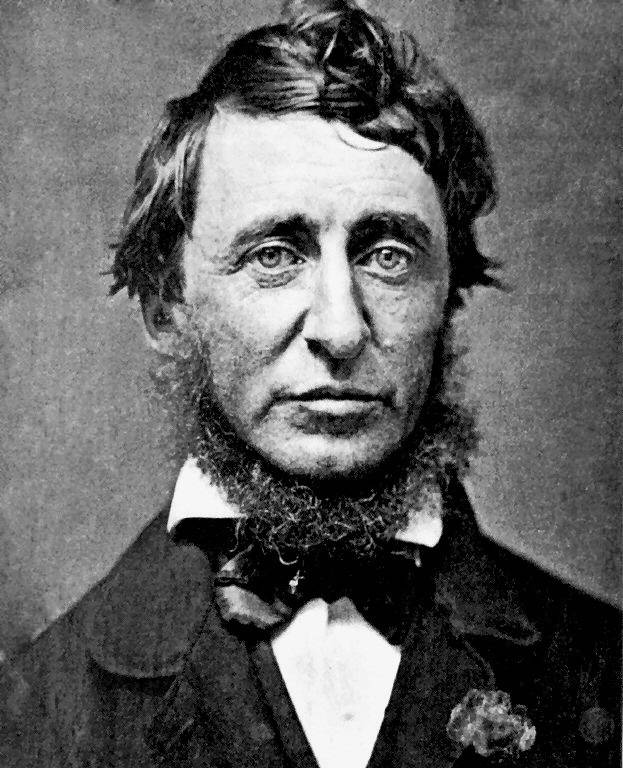 Henry David Thoreau (1817-1862) spent plenty of time during his seclusion at Walden Pond in 1847, who was probably the first to actually practice silence and yoga. Thoreau adopted an ascetic diet and spent hours, from sunrise till noon, “rapt in reverie…in undisturbed solitude and stillness,” as he put it. He didn’t do yoga poses, but his embrace of meditation, which would have been very odd in his day, is impressive. In those days no record of any one else practicing Yoga to experience the contemplation. This interest in yoga might have been ignited after reading Manusmriti. He said that “I cannot read a single word of the Hindoos without being elevated.”
Henry David Thoreau (1817-1862) spent plenty of time during his seclusion at Walden Pond in 1847, who was probably the first to actually practice silence and yoga. Thoreau adopted an ascetic diet and spent hours, from sunrise till noon, “rapt in reverie…in undisturbed solitude and stillness,” as he put it. He didn’t do yoga poses, but his embrace of meditation, which would have been very odd in his day, is impressive. In those days no record of any one else practicing Yoga to experience the contemplation. This interest in yoga might have been ignited after reading Manusmriti. He said that “I cannot read a single word of the Hindoos without being elevated.”
Practicing yoga faithfully for about two years at Walden and reading a number of Hindu scriptures, he wrote: “In the morning I bathe my intellect in the stupendous and cosmogonal philosophy of the Bhagavat Geeta, since whose composition years of the gods have elapsed, and in comparison with which our modern world and its literature seem puny and trivial; and I doubt if that philosophy is not to be referred to a previous state of existence, so remote is its sublimity from our conceptions. I lay down the book and go to my well for water, and lo! There I meet the servant of the Brahmin, priest of Brahma, and Vishnu and Indra, who still sits in his temple on the River Ganga reading the Vedas, or dwells at the root of a tree with his crust and water---jug. I meet his servant come to draw water for his master, and our buckets as it were grate together in the same well. The pure Walden water is mingled with the sacred water of the Ganga (Ganges)."
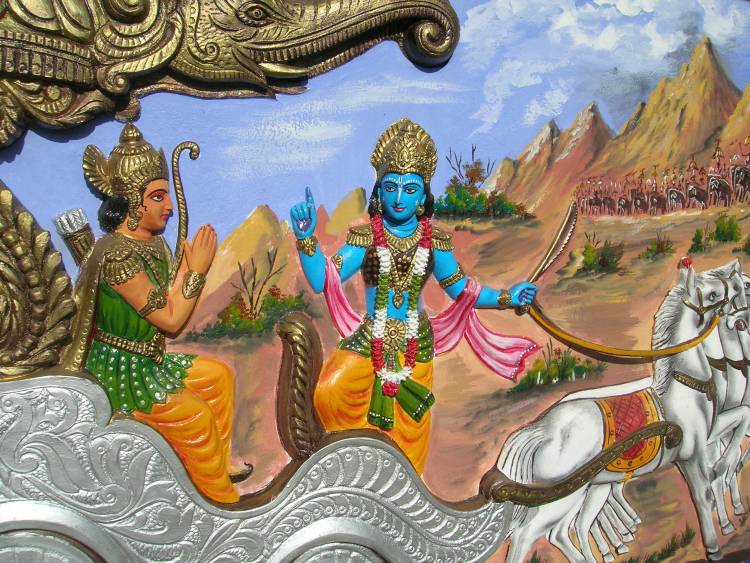 And” One sentence of the Gita, is worth the State of Massachusetts many times over"
And” One sentence of the Gita, is worth the State of Massachusetts many times over"
The book Walden reals the passion, excitement and inspiration Thoreau derived from the Hindu sacred books. It mentions that he used to keep a copy of Bhagavad Gita on his bedside in his cabin; compared the pond with “Ganges River”; and how retreated to the pond to experience the spirit of the ascetic sages of India. He often mentioned about how Asiatic ideas had transformed him spiritually and intellectually. He even mentioned about how his spiritual ecstasy left him “daily intoxicated” with “an indescribable, infinite, all-absorbing, divine, heavenly pleasure, a sense of elevation and expansion .... I speak as a witness on the stand, and tell what I have perceived. The morning and the evening were sweet to me, and I led a life aloof from the society of men.”
Henry David Thoreau “I sat in my sunny doorway from sunrise till noon, rapt in a reverie, amidst the pines and hickory and the sumaches in undisturbed solitude and stillness … I realize what the Oriental mean by contemplation and the forsaking of work.” He says that the man’s close relationship with the nature would energize the spirits and heal the natural environment and help stimulate contemplation and meditation. He felt that the peace, silence and solitude of the natural environment are essential to practice meditation. He stated that “by the time the villagers had broken their fast the morning sun had dried my house sufficiently to allow me to move in again, and my meditations were almost uninterrupted.” The he goes on to say that, “Now that the cars are gone by and all the restless world with them, and the fishes in the pond no longer feel their rumbling, I am more alone than ever. For the rest of the long afternoon, perhaps, my meditations are interrupted only by the faint rattle of a carriage or team along the distant highway.”
Thoreau affirmed to Harrison Blake that “to some extent and at rare intervals even I am a yogi.”How highly Thoreau cherished the inactive life of the yoga, the contemplative life in solitude, can be illustrated by the fact that he devoted two complete chapters of Walden and parts of several others not only to extol the positive virtues of solitude and the meditative life in general, but to show in particular how he himself was a devotee of the yoga while at Walden Pond.
Thoreau embarked on his Walden experiment in the spirit of Indian asceticism. He went into seclusion not for Christian repentance but for contemplation on the very nature of himself to be released from the daily drudgery and petty daily routines. He was practicing what was prescribed in the sixth chapter of Bhagavad Gita that explains the ashtanga Yoga and the difficulties of the mind and how to gain mastery over it. In a letter written to H. G. O Blake in 1849, he remarked:
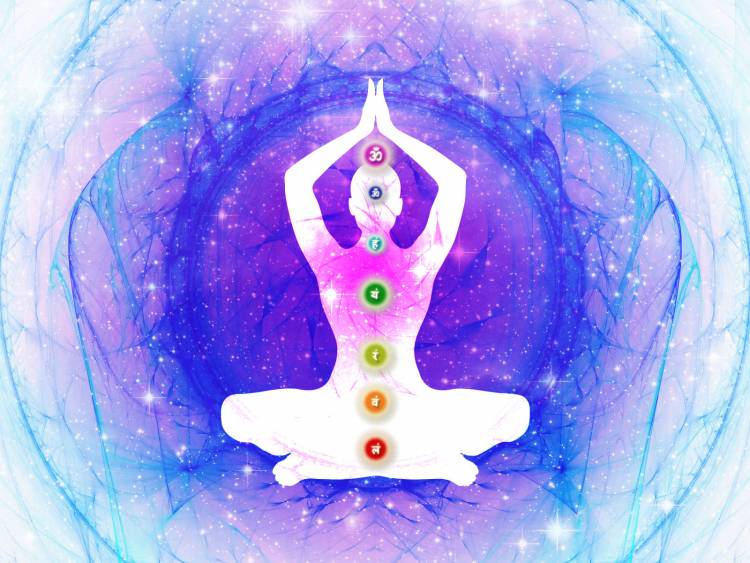 "Free in this world as the birds in the air, disengaged from every kind of chains, those who have practiced the Yoga gather in Brahmin the certain fruit of their works. Depend upon it, rude and careless as I am, I would fain practice the yoga faithfully. This Yogi, absorbed in contemplation, contributes in his degree to creation; he breathes a divine perfume, he heard wonderful things. Divine forms traverse him without tearing him and he goes, he acts as animating original matter. To some extent, and at rare intervals, even I am a Yogi.
"Free in this world as the birds in the air, disengaged from every kind of chains, those who have practiced the Yoga gather in Brahmin the certain fruit of their works. Depend upon it, rude and careless as I am, I would fain practice the yoga faithfully. This Yogi, absorbed in contemplation, contributes in his degree to creation; he breathes a divine perfume, he heard wonderful things. Divine forms traverse him without tearing him and he goes, he acts as animating original matter. To some extent, and at rare intervals, even I am a Yogi.
Thoreau read every book on Indian Philosophy available to him in those days after 1855. His praise to these books are extracted thus:
What extracts from the Vedas I have read fall on me like the light of a higher and purer luminary, which describes a loftier course through a purer stratum.
Whenever I have read any part of the Vedas, I have felt that some unearthly and unknown light illuminated me. In the great teaching of the Vedas, there is no touch of the sectarianism. It is of all ages, climes, and nationalities, and is the royal road for the attainment of the Great Knowledge.
When my imagination travels eastward and backward to those re-mote years of the gods, I seem to draw near to the habitation of the morning, and the dawn at length has a place.
Like Emerson, Thoreau had mystical experiences that Vedanta helped him to understand. "The texts were a kind of touchstone for his own.
Alan Hodder said, "He had moments of euphoria and rapture in nature, but he couldn't really explain them until he started reading the Indian material. Then he actually saw references to what he was experiencing, and he thought, 'Aha! I'm not the only one having this. There's a long tradition to it. The sacred books also taught Thoreau the important distinction between philosophical inquiry and spiritual practice. "One may discover the root of an Indian religion in his own private history," Thoreau wrote in his journal, "when, in the silent intervals of the day and night, he does sometimes inflict on himself like austerities with stern satisfaction." He may have been the first American to call himself a yogi. "Depend upon it that, rude and careless as I am, I would fain practice the yoga faithfully," he wrote to a friend in 1849. "To some extent, and at rare intervals, even I am a yogi."
How did he describe the Yogic experiences in Walden?
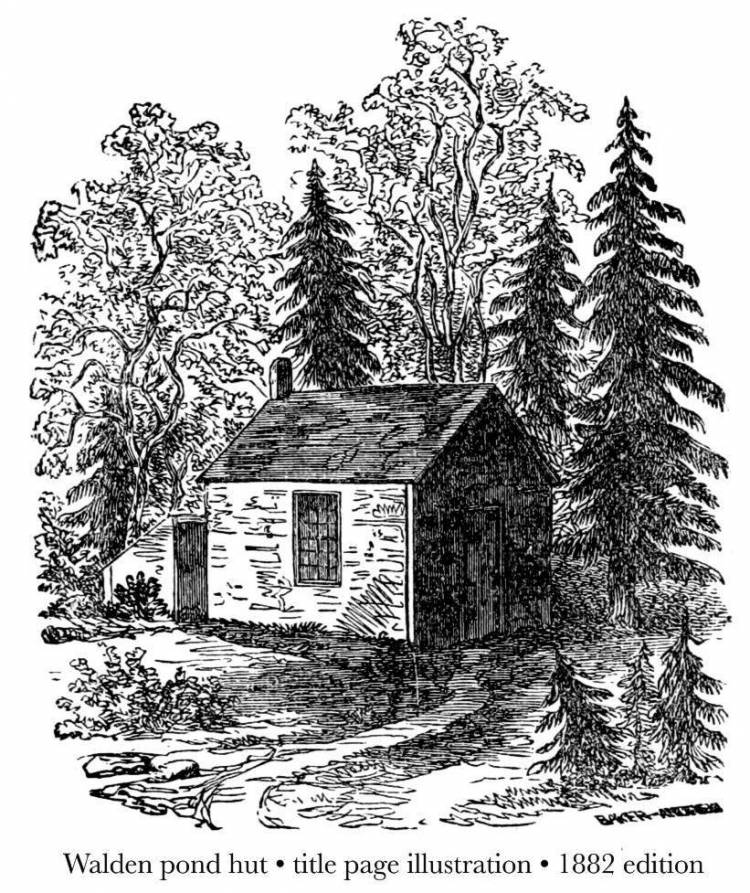 Thoreau practiced yoga and speaks of it in Walden in explicit terms. He even styled himself a "Yogi." In Walden he writes: "I know of no more encouraging fact than the unquestionable ability of man to elevate his life by a conscious endeavor." Yoga, as the Vedantist understands it, is not an esoteric practice but meditative discipline, a focusing of consciousness. It is, in the words of the Gita, a conscious endeavor to "lift the self by the self." Only by such mental discipline can one develop the intuitive faculty, which alone will ultimately take one to the deep-lying essence beneath. Thoreau writes, "By a conscious effort of mind we can stand aloof from actions and their consequences; and all things, good and bad, go by us like a torrent. We are not wholly involved in nature."
Thoreau practiced yoga and speaks of it in Walden in explicit terms. He even styled himself a "Yogi." In Walden he writes: "I know of no more encouraging fact than the unquestionable ability of man to elevate his life by a conscious endeavor." Yoga, as the Vedantist understands it, is not an esoteric practice but meditative discipline, a focusing of consciousness. It is, in the words of the Gita, a conscious endeavor to "lift the self by the self." Only by such mental discipline can one develop the intuitive faculty, which alone will ultimately take one to the deep-lying essence beneath. Thoreau writes, "By a conscious effort of mind we can stand aloof from actions and their consequences; and all things, good and bad, go by us like a torrent. We are not wholly involved in nature."
He found in the Hindu scriptures the conceptions of human life and human potential to a higher elevation. He says that there is divine within each soul and similar divinity is also found in the nature. He said on “rare intervals” his consciousness becomes unbound and experience it as a shoreless and island less ocean. Let us look at what he experiences during those rare intervals:
If with closed ears and eyes I consult consciousness for a moment, immediately are all walls and barriers dissipated, earth rolls from under me, and I float . . . in the midst of an unknown and infinite sea, or else heave and swell like a vast ocean of thought, without rock or headland, where are all riddles solved, all straight lines making there their two ends to meet, eternity and space gamboling familiarly through my depths. I am from the beginning, knowing no end, no aim. No sun illumines me, for I dissolve all lesser lights in my own intenser and steadier light. I am a restful kernel in the magazine of the universe. . .
.
Men are constantly dinging in my ears their fair theories and plausible solutions of the universe, but ever there is no help, and I return again to my shoreless, island less ocean. (The Selected Journals of Henry David Thoreau, ed. Carl Bode (New York: New American Library, Signet Classics, 1960): 39.)
Walt Whitman: Did he experience Kundalini Shakti?
“If anything is sacred, the human body is sacred.”
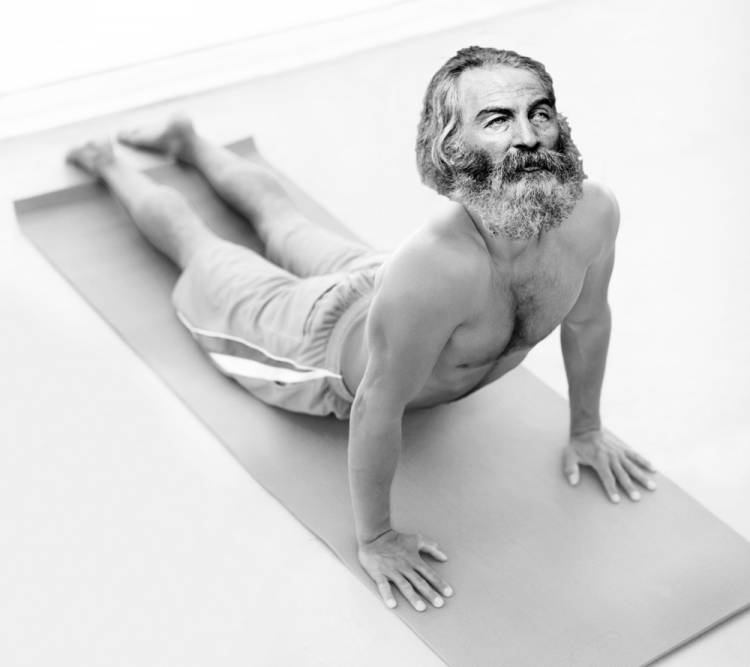 Walt Whitman (1819-1892) was a poet, essayist, humanist, journalist, transcendentalist and a yogi. He was influenced by Emerson and Thoreau in his philosophical outlook toward nature, life, his affinity to Vedanta and yogic experience. Whitman was clearly describing an experience of transcendence. He was considered as a poet of mysticism, cosmic consciousness and religion. He describes his experience as follows:
Walt Whitman (1819-1892) was a poet, essayist, humanist, journalist, transcendentalist and a yogi. He was influenced by Emerson and Thoreau in his philosophical outlook toward nature, life, his affinity to Vedanta and yogic experience. Whitman was clearly describing an experience of transcendence. He was considered as a poet of mysticism, cosmic consciousness and religion. He describes his experience as follows:
Only in the perfect uncontamination and solitariness of individuality. . . . Only here, and on such terms, the meditation, the devout ecstasy, the soaring flight. Only here, communion with the mysteries. . . . The soul emerges, and all statements, churches, sermons, melt away like vapors. Alone, and silent thought and awe, and aspiration — and then the interior consciousness, like a hitherto unseen inscription, in magic ink, beams out its wondrous lines to the sense. Bibles may convey, and priests expound, but it is exclusively for the noiseless operation of one’s isolated self, to enter the pure ether of veneration, reach the divine levels, and commune with the unutterable.
Whitman wrote: “There are divine things well enveloped, I swear to you there are divine things more beautiful than words can tell.” In many of his writings one would notice Whitman’s evolution to the awakening of the Self within and his glimpse of the One Spirit that pervades the universe. In order to achieve this kind of spirit he suggested that “re-examine all you have been told at school, or church or in any book, dismiss whatever insults your soul, and your very flesh shall be a great poem and have the richest fluency not only in its word but in the silent lines of its lips and face and between the lashes of your eyes and in every motion and joint of your body. “
Whitman’s approach was holistic in the sense of establishing connectivity to everything that exists. Everything has a meaning and ever thing is connected. He wanted to remove all barriers to make visible the connectivity between body, spirit and soul; change the mindset; know yourself through knowing others; focus on the present; and experience the moment. He admonishes his readers:
Whitman never set high value on a successful career or worldly aggrandizement; instead his aspiration had always been for the immortal. Looking back on his past life, he wrote in 1871:
- Walt Whitman is now 52 years old. No worldly aim has engrossed his life. He is still unmarried. None of the usual ardors of business ambition, of the acquisition of money, or the claims of society, pleasure, nor even the attractions of culture or art seemed to have enslaved him. The thought and the making of this work has spanned the whole horizon of his life, almost since boyhood. (Complete Works VI.I: 38)
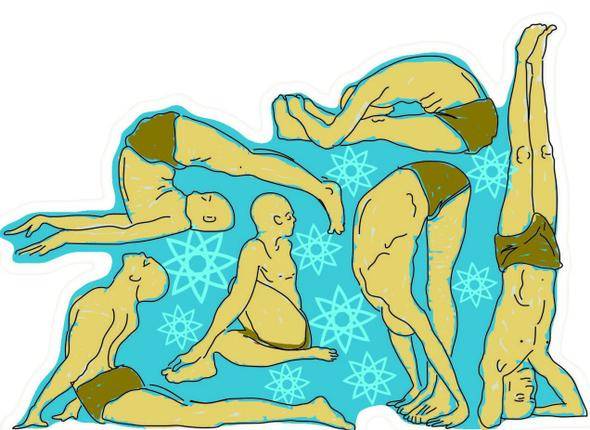 Furthermore, Whitman's realization of the transcendental self-enabled him to overcome his inhibitions and helped the enlargement of his vision; the inversions of his sexual nature were transmuted into a spiritual passion for the mass of humanity.
Furthermore, Whitman's realization of the transcendental self-enabled him to overcome his inhibitions and helped the enlargement of his vision; the inversions of his sexual nature were transmuted into a spiritual passion for the mass of humanity.
Whitman has written extensively not only about his capacity to disassociate himself but also detaching himself from all surrounding activities so that he can extract thoughts and experiences of his own mind. V K Chari writes that “Whitman is conscious of acertain trance-like state leading to the suspension of the conscious intellect and accompanied by a strange feeling of exaltation and joy and a transformation, as it were, of the whole being; a state in which the mystic experiences a new awakening, the awakening of the spiritual vision, and, like the sage in the Upanishad, understands the being whose essence is joy. (Whitman in the Light of Vedantic Mysticism: An Interpretation; p: 104)
In that condition the whole body is elevated to a higher state consciousness. At this level there is more illumination both inside and outside, more serenity and purity. It is only through mental discipline and concentration; one can dive deep into the self. At that level duality is dissolved.
Sorrows and disappointments cease -- there is no more borrowing trouble in advance. A man realizes the venerable myth -- he is a god walking the earth, he sees new eligibilities, powers and beauties everywhere; he himself has a new eyesight and hearing. The play of the body in motion takes a previously unknown grace. Merely to move is then a happiness, a pleasure -- to breathe, to see, is also. . . . All the beforehand gratifications, drink, spirits, coffee grease, stimulants, mixtures, late hours, luxuries, deeds of the night, seem as vexatious dreams, and how the awakening; -- many fall into their natural places, wholesome, conveying diviner joys. (Complete Writings, IV, 26-27.)
Whitman, however, sometimes insists that during this state of meditation the "senses are not lost or counteracted" but maintained intact:
a trance, yet with all the senses alert -- only a state of high exalted amusing -- the tangible and material with all its shows, the objective world suspended or surmounted for a while, and powers in exaltation, freedom, vision yet the senses not lost or counteracted. (Clifton Joseph Furness, Walt Whitman's Workshop (Cambridge: Harvard University Press, 1928), p. 21.
There is some evidence that Whitman underwent certain types of the experiences that are usually accompany the practice of Yoga. He may have used such terms as trance, consciousness, sensation, rapture, contemplation and others. There is no question that he experienced a revolutionary transformation in his life. It may have happened when he was about 29 years old.
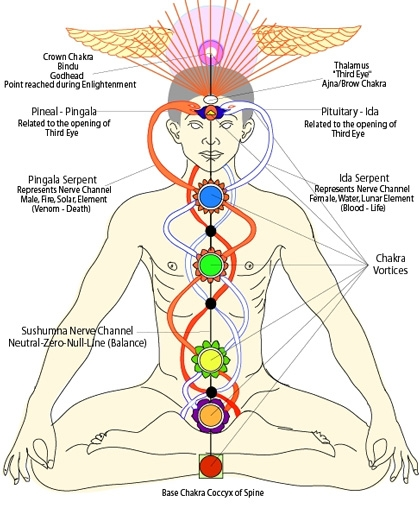 In fact, Geeta Khadka described a remarkable insight into the experiences of trance like status and consciousness as described by Whitman. In an article entitled “Song of Myself as Kundalini Yantra” she described as to how Whitman may have experienced the Kundalini Shakti. She divided the Song of Myself into different locations in the physical body to represent different chakras; Muladhara, Svadhisthana, Manipura, Anahata, Visuddha, Ajna and Sahasrara Chakra.
In fact, Geeta Khadka described a remarkable insight into the experiences of trance like status and consciousness as described by Whitman. In an article entitled “Song of Myself as Kundalini Yantra” she described as to how Whitman may have experienced the Kundalini Shakti. She divided the Song of Myself into different locations in the physical body to represent different chakras; Muladhara, Svadhisthana, Manipura, Anahata, Visuddha, Ajna and Sahasrara Chakra.
Sahasrara Chakra means thousand petalled lotus. Kundalini Shakti moves from the base chakra known as Muladhara to final chakra where one experiences tranquility, peace, joy and wisdom. Arguments become irrelevant and nonsensical. At this stage one is released from the time and space and experience the true nature of oneself. The following passage would resemble that of transcendental illumination he may have experienced:
- Swiftly arose and spread around me the peace and knowledge that pass all the arguments argument of the earth,
- And I know that the hand of God is the promise of my own, and I
- know that the spirit of God is the brother of my own,
- And that all the men ever born are also my brothers, and the women my sisters and lovers,
- And that a keelson of creation is love.
This passage should not have been written by anyone who did not experience the kundalini power. Whitman’s experience is similar to that described by Gopi Krishna:
“Suddenly, with a roar like that of a waterfall, I felt a stream of liquid light entering my brain through the spinal cord . . .. I felt the point of consciousness that was myself growing wider, surrounded by the waves of light." (Higher Consciousness: The evolutionary thrust of Kundalini).
At this level all barriers disappear, all duality dissolves, everything appears equally important and everything has relevance. Everything looks beautiful, serene and sacred. Everything pulsates with energy.
- I believe a leaf of grass is no less than the journey-work of the stars,
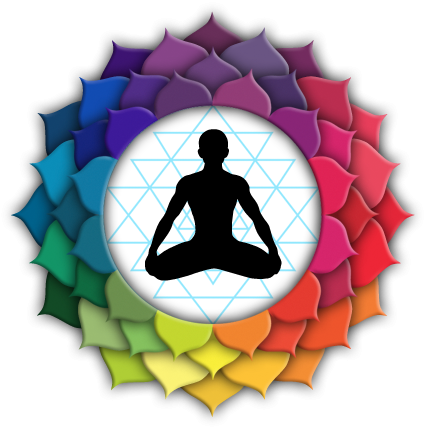
- And the pismire is equally perfect, and a grain of sand, and the egg of wren,
- And the tree-toad is a chef-d'oeuvre for the highest,
- And the running blackberry would adorn the parlours of heaven.
- Whitman recognizes the essential unity of matter and body, which find no opposition between the body and soul
- I am the poet of the body and I am the poet of the soul.
- I have said that the soul is not more than the body,
- And I have said that body is not more than the soul,
- And nothing, not God, is greater to one's self is.
Similarly, his poems “Passage to India” and “Leaves of Grass” reveal how much he was able to absorb and digest the essence of Vedanta philosophy with his transcendental experiences. He lived his life meaningfully without escaping from it. He thought one should outgrow from all the dilemmas; integrate the body, mind and soul; experience the nature; and dissolve the dualities to enjoy the present moment. Let us appreciate the ground work prepared by Emerson, Thoreau and Whitman to introduce yoga and meditation to America and changing the landscape forever.

DONATIONS
As many of you know that SaveTemple Office was opened in June 2012 in Hyderabad. Office is located in Khairatabad. Four full time employees are working on the update of our website, Aalayavani Web Radio, Aalayavani magazine, conducting various activities to preserve and protect Hindu Temples and Culture. Our budget is approximately 2 lakh rupees per month. We request your generous donation to conduct activities to promote unity among Hindus and restore the glory of Hinduism.
Please DONATE. Your donations are appreciated to continue the work.
NOTE: GHHF is exempt from federal income tax under section 501 (c) 3 of the Internal Revenue code. Our tax ID # 41-2258630
Donate at: https://www.savetemples.org (click ‘Donate’ button on right side).
Where to send your DONATIONS?
Global Hindu Heritage Foundation
14726 Harmony Lane, Frisco, TX 75035.
Your donations are tax deductible. Our Tax ID: # 41-2258630
Any questions, call: Prakasarao Velagapudi
Please subscribe to Save Temples Telegram channel at https://t.me/savetemples
GHHF Board of Directors:
Prakasarao Velagapudi PhD, ( cell), ( home); (; ); Satya Dosapati (); (); (); Vinay Boppana (248-842-6964); (); (); (); (); (); (); (); (); Murali Alloju MD (703-953-1122); Veeraiah Choudary Perni MD (330-646-8004); Vishnu Kalidindi MD; Srivas Chebrolu MD; Avadesh Agarwal; Sudheer Gurram MD; Rajendrarao Gavini MD; Srinath Vattam MD, Ravi Gandhi, Ramadevi Vadali, Kishore Kancharla, Ranjith Kumar Rikkala; Satish Kodeboyina; and Dr. Ghazal Srinivas, Honorary Brand Ambassador.
GHHF Dallas Core Group
(); ); Srinivas Pamidimukkala (); (); (); (); (); (}; (); (); (); (); (); (); (); (); (); (); Sitaram Panchagnula (714-322-3430); Vasanth Suri (408-239-3436); Phani Aduri (214-774-2139); Konda Srikanth (214-500-5890); Siva Agnoor (214-542-661).











 Urgent support needed for Bangladesh Hindus
Urgent support needed for Bangladesh Hindus 







